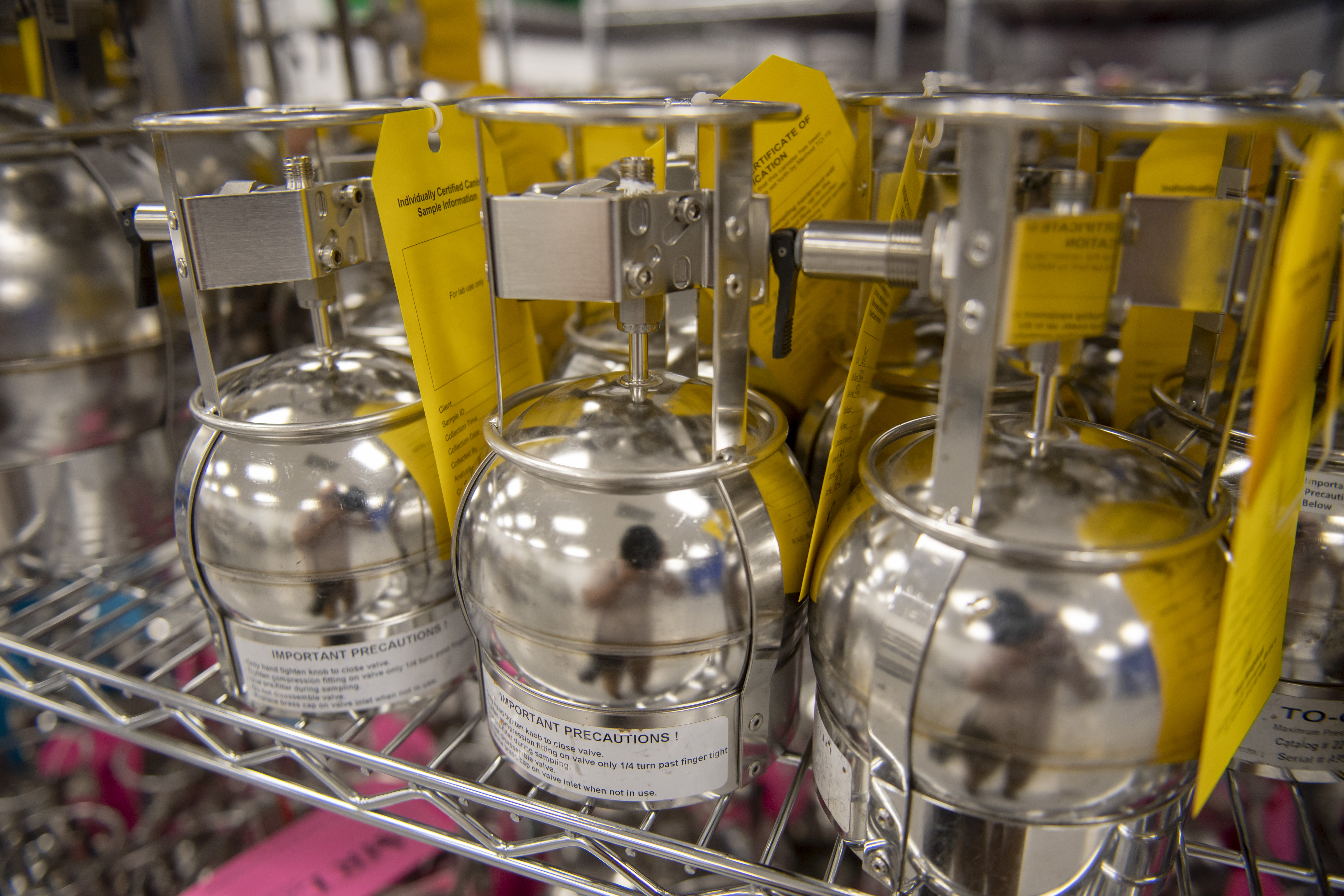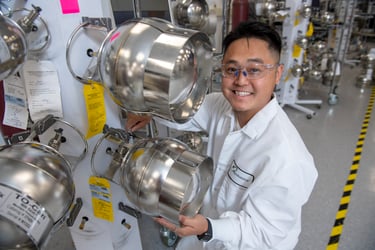TO-15A: What You Need to Know, that You Don’t Know

In this edition of Keeping Pace® with Analytical Services, we focus on EPA Method TO-15A.
EPA has promulgated a new ambient air testing method under the name TO-15A, but it is not an update to the current method as the name implies. Method TO-15A is specifically written for trace-level testing of ambient air in specially prepared summa canisters. It is not applicable for analysis of impacted sampling environments where the current method TO-15 meets the need.
Simply stated EPA Method TO-15A was created to generate higher-quality data and lower reporting limits in ambient air matrices.
Why Method TO-15A Was Developed
We are now more than 22 years away from the initial publication of Method TO-15. As time went on, analysts found that the criteria in Method TO-15 did not address the requirement to detect ever-lower levels of analyte concentrations in ambient air. In 2014, the EPA Work Group began the process of creating TO-15A, and in September 2019 the EPA published Method TO-15A.
TO-15A focuses on enhancing performance criteria to improve the certainty of air monitoring results, especially for lower-level concentrations seen in ambient air. It includes more stringent requirements on canister cleanliness, method detection limits, sample result validity, and instrumentation calibration quality controls. These changes acknowledge the general reductions in ambient air VOC (Volatile Organic Compounds) concentrations in the U.S. as well as improvements in canister technology, canister hygiene practices, and analytical instrument sensitivity.
What Are the Significant Changes?
As discussed earlier, TO-15A was written to address the general reductions in ambient air VOC concentrations and incorporate improvements in canister, sampling, pre-concentration, and analytical instrumentation technologies. Below we have highlighted some of the major changes.
Reporting Limits – Method TO-15A has a 10x reduction in reporting limits. Specifically, TO-15A reporting limits are 20 parts per trillion by volume (pptv) for each targeted VOC as compared to 200 - 500pptv for TO-15.
Calibration Range – The calibration range of instrumentation is also reduced 10x across the board. In EPA Method TO-15, the calibration range is up to 50 ppbv or 50000 pptv. In Method TO-15A, the calibration range is reduced to 5000 PTV. The lower calibration levels for instrumentation are based on an expectation that contamination levels in ambient air samples should be much less than those seen in indoor air or soil vapor sampling. This also allows the laboratory to focus instrument sensitivity to the low-level detection limits required by the new method.
Specially Prepared Canisters Cleanliness
 To drive high-quality data, TO-15A considers background contamination of canisters. This method is designed to eliminate outside impact from potential contaminants during the shipment or storage of the canisters prior to, during, or after sample collection. Canister media, sampling instruments, diluent and reagent gases, and analytical systems are interrelated. Contamination or problems with any portion will compromise data. TO-15A also includes protocols to ensure the cleanliness of flow controllers and laboratory instruments; basically anything that the client sample comes in contact with during sample collection.
To drive high-quality data, TO-15A considers background contamination of canisters. This method is designed to eliminate outside impact from potential contaminants during the shipment or storage of the canisters prior to, during, or after sample collection. Canister media, sampling instruments, diluent and reagent gases, and analytical systems are interrelated. Contamination or problems with any portion will compromise data. TO-15A also includes protocols to ensure the cleanliness of flow controllers and laboratory instruments; basically anything that the client sample comes in contact with during sample collection.
Highlights include:
- Canisters must be checked and verified clean below 20ppt (parts per trillion) which equals about 6.5 PTV in an ambient pressure canister.
- For initial validation, canisters must be cleaned, filled with zero air at 40-50% relative humidity, and then tested at 24 hours AND at 30 days to verify that background levels are less than 20pptv. The use of zero air is now a requirement to ensure that the presence of oxygen in the canister is not contributing in some way to the formation of target compounds, potentially through the oxidation of heavier Semi Volatile Organic Compounds (SVOCs) on or in the canister surface.
- For the 30-day verification requirement, canisters need to be set at ambient pressure and placed on a shelf for 30 days. This is to verify that there's no off-gassing of target components or breakdown of the internal silonite coating during the 30 day storage.
- The number of canisters needed to certify a batch increase with the number of canisters cleaned.
- Canisters are also spiked with a low-level amount of target analytes and analyzed immediately to verify recovery. The canister is then held for 30 days and then re-analyzed to verify there is no loss of recovery.
When to Use TO-15A vs. TO-15
The primary application for TO-15A is to measure trace levels of VOCs in ambient air. It is also used for the assessment of health impacts due to inhalation exposures to Hazardous air pollutants (HAP) source emissions dispersing into downwind areas and the long-term monitoring for HAPs at various urban-scale, neighborhood-scale, and regional background, non-source-impacted sites.
Challenges Associated with EPA Method TO-15A
30-day spike challenge
The lab must spike all the targets of interest into the canister at a very low level. The canisters are then placed on the shelf again for 30 days. The canister is analyzed both at the beginning and end of that period to verify that there are no reactions to targets of interest.
Method TO-15A also increases the number of canisters required to certify a full batch of canisters. Specifically, one canister needs to be checked for up to eight canisters in your batch. That is a notable change in batch size for labs using cleaning systems that can accommodate as many as 40 1L canisters.
Certified or digital gauge use in the field
Method TO-15A requires a digital gauge or a certified gauge with much greater precision than the dial gauges that have become the industry standard for method TO-15. Many of the gauges that Pace® provides are verified plus or minus two inches of mercury and could not accurately measure a 0.1 change as required by method TO-15A. This additional quality control check will be a costly additional piece of equipment required in the field and may have limited availability.
The Effect of TO-15A From a Customer Perspective
While TO-15A will allow labs to detect even lower levels of analyte concentrations in ambient air, the method is not without drawbacks. The number of analytes detectable by TO-15A is lower than TO-15. In addition, lab costs are higher due to changes in processing, additional equipment requirements, and rigorous documentation protocols.
Pace® is pleased to begin offering TO-15A to our clients. However, since not all projects require TO-15A, we will continue to offer TO-15 where appropriate. If you aren’t sure which method to use, our technical specialists would be happy to discuss your project requirements. In addition, we conducted a webinar in December that goes into even greater detail.
Watch: TO-15 and TO-15A: What You Need to Know, that You Don’t Know

.png)
.png)